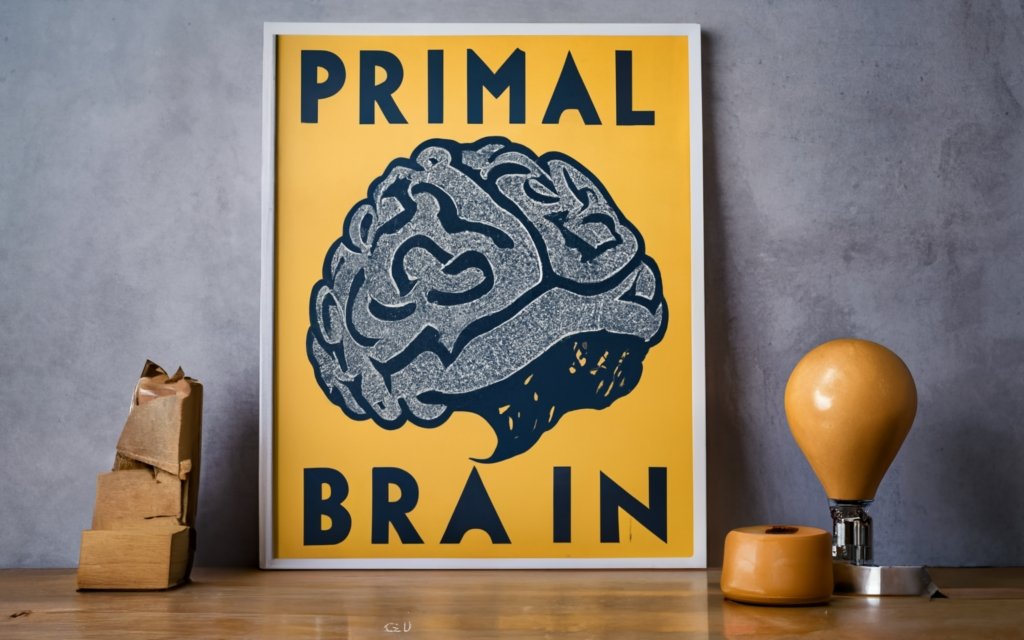For years, Bianca Baumann and I have been sharing a number of invaluable principles that Learning and Development (L&D) can “Steal From Marketing“. It dawned on me that I’ve never put pen to paper to share these transformative ideas, and that’s a disservice I intend to rectify today. These principles aren’t just theoretical musings; they are the foundation which much of my work is built upon. While there’s a treasure trove of marketing strategies that could enrich the L&D landscape, one stands out as the linchpin: speaking to the primal brain. (I know this isn’t technically a marketing concept but they’ve adopted it much faster and more widely than L&D). This concept is pivotal and informs and elevates so many more things from the way we write and communicate to our choices for multimedia and tapping into emotions.
The Evolution of Learning: From Knowing to Doing
Imagine a young child in a classroom, diligently memorizing multiplication tables. Fast forward to adulthood, and that same person is now in a corporate training room, learning about workplace ethics. The settings have changed, but the underlying principle remains the same: knowledge acquisition. Despite the wealth of information available, there’s a glaring disconnect between what we know and what we actually do.
Why does this gap exist? The answer lies in the evolution of our educational journey. Early on, the focus is on foundational skills—learning the ABCs and 123s. As we mature, the emphasis subtly shifts from “knowing” to “doing,” especially in professional settings. Yet, traditional learning experiences are still rooted in the “knowing” paradigm, leaving a void when it comes to “doing.”
The Missing Link: Speaking to the Primal Brain
Enter the Dual Processing Theory, or as I prefer to call it, the art of “speaking to the primal brain.” This psychological framework, which won Daniel Kahneman a Nobel Prize, offers a lens through which we can explore two pivotal questions:
- How can we dissect and comprehend the underlying factors that influence whether a behavior occurs or not?
- How can we design learning experiences that not only impart knowledge but also lead to behavioral change?
A Case Study: The Failure of System 2-Centric Training
Consider a typical sexual harassment prevention training program. It’s often a one-size-fits-all approach, loaded with legal jargon and abstract concepts. The training focuses on what Kahneman calls System 2 thinking—logical reasoning and analytical skills. However, it fails to address the emotional and instinctual aspects that often drive inappropriate behavior in the first place. The result? Employees may understand the rules but may not internalize the reasons behind them, leading to a lack of behavioral change.
The Solution: Engaging System 1 Thinking
What if we redesigned this training to speak to System 1, the primal brain? Instead of a lecture filled with legal terms, imagine a scenario-based training that puts the participants in the shoes of both the harasser and the harassed. Use visceral storytelling and sensory details to evoke emotions, forcing the primal brain to confront the immediate consequences of inappropriate behavior. By engaging System 1, we can trigger an emotional response that not only educates but also motivates change.
The New Paradigm: Understand and Act
By “speaking to the primal brain,” we can create more effective, engaging, and transformative learning experiences. We move beyond the traditional “learn and remember” model and step into a new paradigm—one that acknowledges the primal forces driving our actions. Sometimes, the issue isn’t a lack of knowledge but rather other underlying factors that a traditional learning approach can’t address.
Conclusion: A Groundbreaking Upgrade for Your L&D Toolkit
In summary, the field of Learning and Development stands to gain immensely by incorporating insights from Dual Processing Theory. By going beyond the conventional wisdom of “learn and remember,” we venture into the realm of “understand and act.” Are you ready to harness the power of the primal brain in your learning design?
As Daniel Kahneman eloquently stated, “We’re blind to our blindness. We have very little idea of how little we know. We’re not designed to know how little we know.” This profound insight underscores the often invisible yet powerful role our subconscious, or primal brain, plays in shaping our behaviors. We may think we’re in control, making logical and reasoned decisions, but it’s often our System 1 thinking that’s pulling the strings behind the scenes.
So, why is this revelation a game-changer for Learning and Development? Because it’s not enough to simply fill minds with knowledge; we must also ignite the emotional and instinctual engines that drive action. By “speaking to the primal brain,” we tap into the raw, unfiltered core of human behavior. We awaken the dormant forces that not only dictate how we act but also why we act the way we do.
Imagine the transformative power of training programs that don’t just inform but also inspire. Picture a workforce that’s not just educated but also emotionally invested in applying what they’ve learned. That’s the untapped potential we unlock when we speak to the primal brain.
Feel that spark of curiosity? That’s your primal brain nudging you towards a revelation. Dive into Daniel Kahneman’s “Thinking, Fast and Slow” and unlock the secrets of human behavior. Trust your instincts; this is a journey you won’t want to miss.

2 thoughts on “Want to Upgrade Your L&D Results? Speak to the Primal Brain”